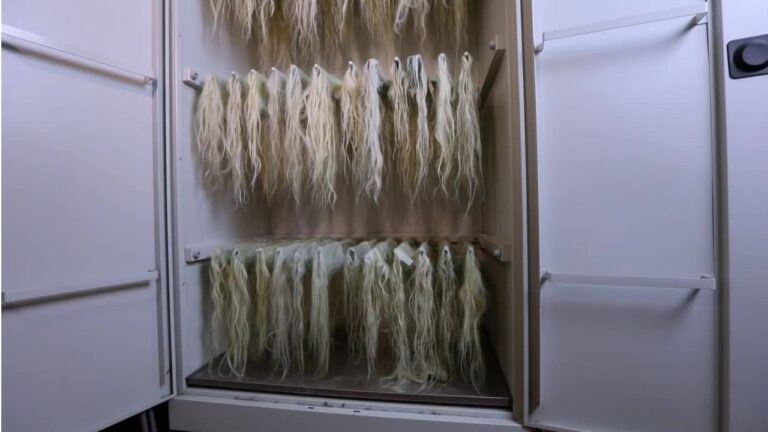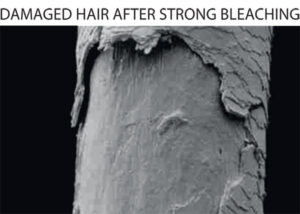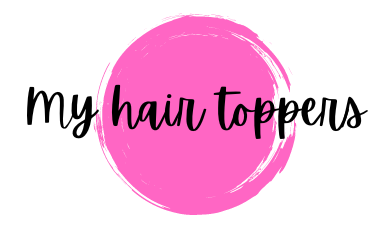How is a Women’s Hair Topper made?
As you may know, a women’s hair topper can be made from human hair or synthetic fibers, and hair toppers made from real hair have a more natural appearance compared to those made from synthetic materials. Real hair toppers have their own texture, shine, and unique color with various shades. They also have a natural movement and can be styled as desired.
The hair’s movement refers to how it flows and falls on the face and shoulders. In a woman’s hair topper made of human hair, this movement depends on the length, thickness, and most importantly, how healthy the hair is. Healthy hair with intact cuticles tends to have a more natural movement.
The condition and health of the hair are crucial factors during the production of each women’s hair topper. A well-made human hair topper depends on healthy hair that is carefully knotted to create a natural movement and flow, giving the effect of a real head of hair.
The type of hair used is a fundamental factor that distinguishes a quality topper from others. The more the hair’s natural characteristics are preserved during production, the more the hair topper will resemble and mimic real hair.
There is a wide selection of natural and synthetic women’s hair toppers in the market, but even among real hair, not all are the same!
The quality of the finished product depends on the quality of the hair used and the skill of an experienced artisan in the production process
In this article:

Hair Structure and Characteristics of a Human Hair Topper
Before delving into the different stages of how a women’s hair topper is produced, let’s focus on the main characteristics of human hair.
The Hair Shaft’s is Composed of Three Layers:
- Medulla: The innermost layer made of cells responsible for hair growth.
- Cortex: The middle layer contains cells with melanin, which gives the hair its color.
- Cuticle: The outermost layer is made of flat, overlapping cells like roof shingles, protecting the hair shaft from external factors.
The health of the hair depends on the health of its cuticle. The cuticle is the outer layer exposed to view and touch. Healthy hair has intact cuticles aligned in the same direction, with the free side toward the tip.
The cuticle arrangement contributes to the hair’s shine and allows the strands to glide smoothly over each other, preventing tangles and knots. The hair becomes dull, dry, and prone to breakage if the cuticle is damaged.
The Importance of Healthy Cuticles in a Women’s Hair Topper
The hair’s beauty and well-being depend on its cuticles’ health. This applies to both the natural hair on our heads and the hair used in women’s hair toppers production. It is essential to choose hair toppers made with hair whose cuticles are intact, especially longer hair toppers.
It is important to note that the hair used in the women’s hair toppers market is mainly sourced from India and China. These are dark-colored hairs that undergo processes of depigmentation and subsequent coloring to match the manufacturer’s desired shades. To work with the hair correctly, it is necessary to use healthy, virgin hair that has not undergone any chemical treatment. Working with previously treated hair that is not 100% healthy may lead to further damage to the hair
What is involved in the production of a high a quality Hair Topper?
The process of creating a high-quality women’s hair topper from human hair is complex. Specific quality standards must be observed during every stage of the production chain, from sourcing the raw materials to processing the hair and final packaging.
Sourcing Raw Materials and Selection
High-quality raw human hair is essential. Healthy and strong hair that has not undergone any chemical treatment (such as coloring, bleaching, or perming) is required. The hair must be Remy hair, meaning the cuticles are intact, and all the hairs have the same root-to-tip direction.
During the collection phase, the hair of the donor is first tied into braids or ponytails to ensure that all the hairs have the same root-to-tip direction (and thus, the cuticles are aligned in the same direction). Then, the braids or ponytails are cut.
Real Remy hair is now a minority in the market. This is due to two main factors: increased demand for hair and higher costs.
Depigmentation
The processing continues with the delicate and precise depigmentation of the hair. The goal is to lighten the hair while keeping the cuticles intact and respecting the entire hair structure.
The required processing time varies depending on the desired color. For example, if you want to produce a women’s hair topper with light blonde hair, the original hair color (usually brown or chestnut) must undergo progressive depigmentation, which can take several days.

Editor’s note
Look can be deceiving, so it’s good to research the production processes of the hair topper we want to wear and rely on brands that certify the quality of the hair used and the adequacy of the processes to which the hair is subjected.
Some manufacturers use aggressive products to speed up the depigmentation process and consequently cut costs. This comes at the expense of hair health. A highly aggressive bleaching process can irreparably damage the hair and its structure, compromising its integrity.
The hair can become dry and brittle, losing its natural softness and shine. Often, even the cuticles can be affected, and in the worst case, they may lift and detach. Silicone products are often used to temporarily provide body, shine, and silkiness, but these effects will fade after a few washes. A human hair topper made with such hair will become dry, lacking body and luster, and the hair will tend to knot beyond repair after a few washes.
